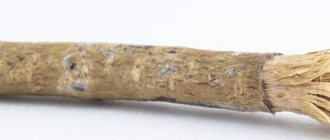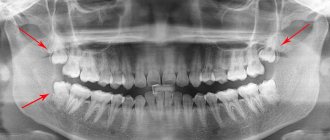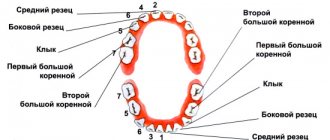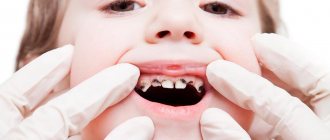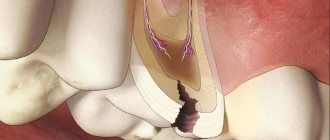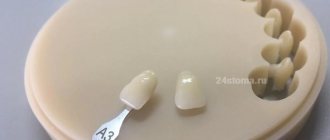Gels and rinses
To prevent the development of caries, you can use special gels and mouth rinses. They usually work in several directions at once:
- strengthen (remineralize) and saturate the enamel with fluorine, phosphorus, calcium, magnesium;
- normalize the microflora of the oral cavity;
- prevent the proliferation of cariogenic bacteria;
- prevent the development of gum inflammation;
- freshen breath;
- relieve dental hypersensitivity.
The gel creates a thin film on the teeth containing minerals necessary to give the enamel strength. It is usually applied to the teeth for a few minutes after completing oral hygiene or used instead of toothpaste, but not more than once a week. After treating teeth with gel, it is recommended not to eat or drink water for half an hour. You can also do the procedure before bed.
Dental elixirs with anticaries effect are used as an additional means of oral hygiene. They are advisable to use after cleaning your teeth with paste, floss or interdental brushes. In order for the rinse to have time to exert its preventive effect, it should be kept in the mouth for at least 30 seconds. It is recommended to make rinsing movements so that all teeth are washed with the solution. After the procedure, you need to refrain from eating and drinking for half an hour. You need to use mouthwash twice a day.
Nutrition
The predominance of easily digestible carbohydrates in food (sugar, honey, chocolate, sweets, confectionery, sweet fruits) contributes to the development of caries. Therefore, as a preventive measure for this disease, it is recommended to eat foods containing xylitol or sorbitol (sweeteners) instead of sugar-containing products. They have an anti-caries effect.
Some products (milk, hard cheese, nuts) can have a remineralizing effect, so it is recommended to increase the share of these products in the daily diet. In addition, due to the presence of fats in these products, the formation of dental plaque, and subsequently plaque, is prevented.
Also, for preventive purposes, it is recommended to enrich the daily menu with fresh vegetables and fruits. In addition to the fact that they saturate the body with important microelements and vitamins, they have a massaging and cleansing effect, and also lead to increased salivation. This fact is important due to the fact that a sufficient amount of saliva protects teeth from the damaging effects of organic acids contained in food products.
For the same purpose, dentists advise chewing gum after meals. In addition, chewing gum contains pyrophosphates and calcium lactate, which prevents the formation of supragingival calculus.
Drinking water quality
Dental health largely depends on the type of drinking water you drink. In most regions, fluoride, which has a pronounced anti-caries effect, is added to it for preventive purposes. Its sufficient intake into the body is especially important in childhood, when the development and mineralization of teeth occurs. Drinking fluoridated water can reduce the likelihood of developing tooth decay by 50%. However, its excess is fraught with other dental problems, such as fluorosis.
Causes of caries development
There can be many reasons for the appearance of caries, but the main one is a violation of the acid-base balance in the oral cavity, which leads to the formation of plaque. Gradually, plaque, if not removed, accumulates, penetrating the inner layers of enamel and destroying the tooth.
In turn, a violation of this balance may have the following reasons:
- poor hygiene;
- an excess of sweet and overly fatty foods in the daily diet;
- insufficient intake of vitamins (including from fresh fruits and vegetables);
- poor quality of drinking water;
- consequences of diseases suffered in childhood (for example, rickets);
- diabetes;
- dysfunction of the thyroid gland;
- gastrointestinal diseases;
- general decrease in immunity.
The answer to the question: “Is it worth treating caries?” - unambiguous. It doesn’t just need to be treated: you need to see a doctor at the first sign of its appearance. Otherwise, advanced caries can lead to severe pain and eventual tooth loss.
Complications
If left untreated, the infection spreads further, affecting the pulp. An inflamed nerve causes very severe pain. The disease then spreads beyond the dental boundaries, covering the tissues adjacent to the roots - the periodontium, forming purulent accumulations in the form of cysts (purulent sacs). Periodontitis is inflammation of the areas around the tooth.
Caries pain is short-lived, occurs in the presence of irritants and goes away immediately after exposure. The reaction occurs when pressure is applied: when the septum with pulp is thinned, the nerve reacts sharply, as pieces of food fall into the caries cavity and put pressure on its base (bottom). When they are removed from the hollow, the pain usually goes away. If it appears out of nowhere, it is a clear sign that the disease is complicated by pulpitis.
Distinctive symptoms:
- caries pain is caused only by the presence of an irritant, while pulpal pain is constant and spontaneous;
- chronic pulpitis can also react to thermal or mechanical irritants, but, unlike caries manifestations, the pain syndrome does not go away immediately after their elimination, but after a period of several minutes to half an hour.
Expert opinion. It is easier to prevent any disease than to treat it. But, if it occurs, then the earlier treatment is started, the simpler and less expensive it is. Caries is not one of those diseases that “will go away on its own”: it can only degenerate into serious complications that threaten tooth loss, which can only be compensated for by implantation, which cannot be compared with the duration and cost of anti-caries therapy.
Factors provoking the development of caries
In addition to the above reasons, caries can be caused by:
- anatomical features of the structure of teeth (congenital dimples in the enamel in which plaque accumulates);
- malocclusion (crooked teeth lead to the fact that even good toothpaste and a high-quality brush are not able to fully cope with cleansing);
- increased viscosity of saliva (renewal of microflora does not occur properly due to this, resulting in various diseases);
- a state of constant stress and increased nervousness (this leads to a deterioration in the absorption of microelements from food).
Prevention
How to protect yourself from caries?
- rinse your mouth after eating with Asepta Fresh (you can use chewing gum, but always without sugar);
- use dental floss, forgetting about toothpicks;
- choose the toothpaste wisely and change the brush more often;
- strengthen your immunity;
- take vitamins;
- take care of a balanced diet;
- no smoking;
- avoid stress.
Sources:
- Report on the determination/confirmation of the preventive properties of personal oral hygiene products “ASEPTA PLUS” Remineralization doctor-researcher A.A. Leontyev, head Department of Preventive Dentistry, Doctor of Medical Sciences, Professor S.B. Ulitovsky First St. Petersburg State Medical University named after. acad. I.P. Pavlova, Department of Preventive Dentistry
- Report on determining/confirming the preventive properties of toothpaste “ASEPTA PLUS” COFFEE and TOBACCO Author: doctor-researcher A.A. Leontyev, head Department of Preventive Dentistry, Doctor of Medical Sciences, Professor S.B. Ulitovsky. First St. Petersburg State Medical University named after. acad. I.P. Pavlova, Department of Preventive Dentistry
- The role of anti-inflammatory rinse in the treatment of periodontal diseases (L.Yu. Orekhova, A.A. Leontyev, S.B. Ulitovsky) L.Yu. OREKHOVA, Doctor of Medical Sciences, Prof., Head of Department; A.A. LEONTIEV, dentist; S.B. ULITOVSKY, Doctor of Medical Sciences, Prof. Department of Therapeutic Dentistry of St. Petersburg State Medical University named after. acad. I. P. Pavlova
Treatment of dental caries and its features
The stage of development of carious formation directly affects the complexity of treatment.
- Caries in the spot stage, when areas of white and less often dark color are noticeable on the enamel, but the enamel itself is not damaged. A change in color indicates a loss of calcium in the area where the stain appeared. This is the simplest form of carious formation, which does not even require drilling. To correct the situation, a remineralization procedure is necessary - sometimes the patient can do it on his own at home.
- Superficial caries, in which the defect is located within the enamel layer, without affecting deeper layers. Here you cannot do without standard filling.
- Medium form, characterized by caries extending beyond the boundaries of the enamel and damage to the upper part of the dentin.
- Deep form , when the disease penetrates into the deep layers, sometimes involving the pulp. As a rule, it is accompanied by pain. This is the most advanced case, so a patient who did not go to the clinic on time and reached this stage will be forced to be treated in several stages. Treatment of deep caries requires separate consideration, as it is the most complex.
In addition, there is also bottle caries in children , the treatment of which has its own characteristics, since it affects only the upper incisors.
Classification
There are several layers of this degree of caries:
- surface
. The amount of fluoride decreases, minor areas are affected;
- subsurface.
Calcium levels decrease, enamel permeability increases;
- central.
The calcium level decreases significantly, the enamel quickly loses strength;
- intermediate.
There are some changes, the microspace has a volume of 15-17%;
- area of shiny enamel.
Relatively normal condition.
How dental caries is treated with laser
In addition to the traditional treatment of caries, modern medicine offers an innovative method using a laser.
Using a laser you can:
- selectively remove affected tissue, preserving healthy tissue as much as possible;
- sterilize the canals, which is necessary in the treatment of pulpitis.
Among the advantages of the laser:
- high quality of treatment;
- no pain;
- longevity of the results obtained;
- complete safety for the patient;
- no discomfort during the treatment process.
The laser allows you to achieve the formation of a completely sterile cavity and avoid chips and cracks, which often happens when using a drill. The surface of the tooth becomes like pumice, which has a positive effect on the properties of the materials used for filling.
How caries is treated with the ICON system
This is another modern technology that allows minimal use of medical instruments: in rare cases, the doctor uses a drill, but in most situations it is possible to use a hand instrument, which preserves the maximum possible volume of natural tooth tissue.
In addition, the ICON system has the following advantages:
- no need for pain relief;
- healthy dentin is not damaged during treatment;
- the procedure lasts no more than 45 minutes, there are no age restrictions.
How to treat dental caries using the ICON system:
- soft tissues are isolated with a rubber dam;
- the affected area is treated with a special gel;
- the carious area is cleaned with a medical instrument;
- a gel is applied, popularly called a “liquid filling”;
- the composition is fixed using ultraviolet light;
- The surface of the tooth is polished.
But the procedure also has a minus, otherwise it would be used everywhere: this method can only be used at the initial stage of caries development, but for deeper lesions you cannot do without a drill.
Comments
[…] leads to diseases of the teeth and gums such as caries, gingivitis and periodontitis. But despite this [...]
Irrigator Aquajet LD-A8I, reasons why you should choose. (05/05/2018 at 09:00) Reply to comment
[…] tooth enamel and caries are two completely different diseases. However, thin and [...]
Enamel hypoplasia: 6 features of a dangerous disease (08/15/2018 at 12:00) Reply to comment
[…] But these two diseases are completely different. Firstly, caries is associated with the formation of a large number of bacteria, and [...]
Dental fluorosis: 5 facts about the problem that everyone needs to know (08/31/2018 at 09:00) Reply to comment
Write your comment Cancel reply
Treatment of caries on baby teeth
Many parents, having noticed caries on their child’s baby teeth, believe that nothing needs to be done - these teeth will fall out anyway. However, such a decision is explained by ignorance: not every person knows what kind of caries is treated in modern dental clinics.
When visiting a doctor, a child undergoes:
- ozone therapy is a modern method using a powerful jet of ozone used for antibacterial treatment;
- infiltration is a method in many ways similar to ICON, but a filling is not installed (the doctor is limited to isolating the cavity);
- abrasive cleaning - the method is suitable for the initial stage of caries, has many similarities with professional cleaning of the oral cavity;
- silvering - the enamel is coated with a solution of silver diamine, which disinfects the surface. The method is rarely used due to its low aesthetic appeal - teeth remain black until they fall out;
- Conservative treatment for more serious lesions, accompanied by pain relief.
Treatment of average caries in stages
Step-by-step treatment of caries includes the following steps:
- Cleaning the surface from plaque . How are caries treated in dentistry? First, be sure to clean the damaged tooth and the teeth adjacent to it. To remove plaque, the dentist can use an abrasive brush or floss; to remove the stone, ultrasonic attachments will be required.
- Drilling out affected tissues . Since enamel is hard and durable, it is destroyed less than dentin. It is for this reason that the entrance hole of the cavity may be small, expanding as it deepens. If cervical caries occurs, how to treat it? The doctor drills the edges of the enamel and removes dentin affected by caries. If even a small area of affected tissue remains, on top of which a filling is placed, this is fraught with problems in the very near future, because caries will begin to develop rapidly, which can ultimately lead to pulpitis.
- Isolating the tooth from moisture and saliva . Unfortunately, some dentists (in fact, most of them) neglect this point and skip it. When carious tissue is eliminated, the doctor, in preparation for filling, must isolate the tooth from contact with saliva. It might seem like a small thing, but it affects how long the filling will last. For a long time, ordinary cotton wool or gauze was used for isolation, which was used to cover the tooth, but this method was found to be ineffective. Modern dentistry recommends the use of rubber dam - a thin latex material in which holes are made. Its installation is quite labor-intensive, so dentists avoid this procedure in order to save their own time. The use of a rubber dam by a doctor is a sign that the dentist is conscientious about his work, putting the patient’s health above the profit received.
- Treatment of the cavity with antiseptics.
- Recreating the side wall . How is caries treated if it has affected the surface of the tooth in contact with another tooth nearby? Then you will need to install matrices and wedges to restore the side wall. The procedure cannot be called simple.
- Using acid to condition enamel . To ensure that the adhesive material applied to dentin penetrates into the deep tissues, phosphoric acid is used. At the end of the procedure, the gel must be completely washed off and the surface dried.
- Treatment of enamel with adhesive . In order to ensure ideal fastening of the filling, the enamel is thoroughly impregnated with adhesive material, and after its absorption, it is illuminated with a polymerization lamp.
- Installing a gasket for a seal . A gasket made of a special material is placed at the bottom of the drilled cavity. The need for this action is explained by the peculiarity of the shrinkage mechanisms of the filling material.
- Direct filling , restoring chewing function and aesthetic appearance. To do this, photopolymer materials are laid layer by layer, with each layer illuminated by a lamp, which gives greater strength.
- Surface grinding and polishing . Immediately after installation, the filling is uneven, as a result of which it not only causes a feeling of discomfort, but can even damage the tongue. Polishing will make the tooth smooth.
For many people, it is important not only to undergo caries treatment in Krasnodar, getting rid of pain and discomfort, but also to look attractive. Therefore, the dentist selects the filling material by color, trying to achieve 100% shade similarity with the natural tissue of neighboring teeth. The doctor’s task is to make sure that the filling does not stand out from the rest of the teeth, which is especially important when smiling.
Is it possible to treat caries on the front teeth without pain? Absolutely yes. Long gone are the days when going to the dentist and the treatment process was accompanied by physical suffering. Modern means of anesthesia make it possible for the patient to feel nothing at all. The anesthesiologist is able to select the concentration of the anesthetic so that it will act for several hours. The only unpleasant moment is the insertion of a needle into the gum: the faster the drug enters the tissue, the more painful it is for the patient. Although much here depends on the characteristics of the nervous system of each individual person. For people with a high pain threshold, going to the dentist can be an enjoyable experience.
Preventive measures against caries
Any disease is easier to prevent than to treat, and caries is no exception in this regard.
To avoid its appearance, you need to:
- brush your teeth twice a day for 2 minutes;
- do not use toothpicks - special dental floss is more suitable for high-quality cleaning;
- use an irrigator or mouthwash;
- get rid of bad habits (smoking and drinking alcohol provoke deterioration of the oral cavity);
- eat more calcium in food;
- Get checked by a dentist at least once a year, but it’s better to do it more often.
| We must not forget that the main reason for the formation and development of caries is lack of hygiene. Therefore, prevention is extremely important, which consists of regular high-quality brushing of teeth after each meal. |
Content:
- Reasons 1.1. Influence of socio-economic factors
- Stages and symptoms 2.1. Initial 2.2. Surface 2.3. Median 2.4. In a deep stage
- Complications
Even children know about this statistical disease. And this is understandable: caries has affected up to 90% of schoolchildren, and almost 100% of adults around the world. Back in the late 80s of the last century, the WHO set the task that no more than 20% of the planet's population over the age of 65 should remain toothless. But in Russia there are areas where up to half of the elderly either mutter with a toothless mouth or wear dentures. Periodontitis and carious lesions are the main reasons that, regardless of age, a person loses his natural chewing apparatus.





